Turks- und Caicos-Inseln |
|
|
|
| Übersicht – Contents: | |
Turks- und Caicos-Inseln |
|
|
|
| Übersicht – Contents: | |
Flaggen – Flags: |
|
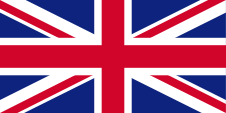 |
Union Flag → quasi Nationalflagge Flagge von Großbritannien – flag of United Kingdom, Seitenverhältnis – ratio 1:2, Quelle/Source, nach/by: Wikipedia (EN)    |
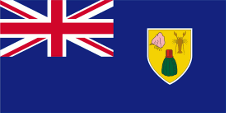 |
seit/since 1999, Flagge der Regierung (Staatsflagge) – flag of the government (state flag), Seitenverhältnis – ratio 1:2, Quelle/Source, nach/by: Flags of the World   |
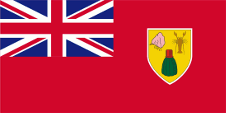 |
seit/since 1999, |
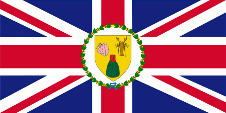 |
seit/since 1999, Flagge des Gouverneurs – flag of the Governor, Seitenverhältnis – ratio 1:2, Quelle/Source, nach/by: Flags of the World |
historische Flaggen – historical Flags: |
|
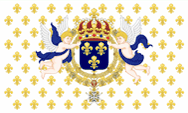 |
18. Jhd./century, |
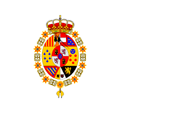 |
18. Jhd./century, |
 |
ab/from 1803, Flagge von Großbritannien – flag of United Kingdom, Seitenverhältnis – ratio 1:2, Quelle/Source, nach/by: Wikipedia (EN)    |
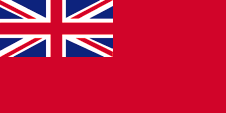 |
1864–1999, |
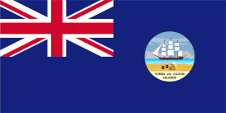 |
1875–1889, Flagge der Regierung (Staatsflagge) – flag of the government (state flag), Seitenverhältnis – ratio 1:2, Quelle/Source, nach/by: Flags of the World |
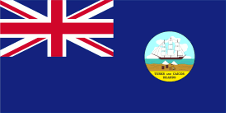 |
1889–1968, Flagge der Regierung (Staatsflagge) – flag of the government (state flag), Seitenverhältnis – ratio 1:2, Quelle/Source, nach/by: Flags of the World |
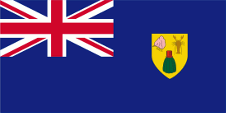 |
1968–1999, Flagge der Regierung (Staatsflagge) – flag of the government (state flag), Seitenverhältnis – ratio 1:2, Quelle/Source, nach/by: Flags of the World |
Westindische Föderation – Federation of the West Indies (1958–1962): |
|
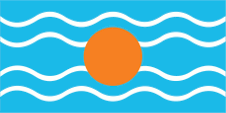 |
Flagge der Westindischen Föderation – flag of the Federation of the West Indies, Seitenverhältnis – ratio 1:2, Quelle/Source, nach/by: Flags of the World |
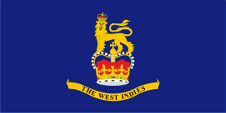 |
Flagge des Generalgouverneurs – flag of the Governor General, Seitenverhältnis – ratio 1:2, Quelle/Source, nach/by: Flags of the World |
|
In der bewegten
Geschichte der Turks- und Caicos-Inseln wechselte deren Besitz einige Male
zwischen Spanien und Frankreich, und damit die hier verwendeten Flaggen.
Auch Engländer (Salzsammler von den Bermuda-Inseln) hatten sich hier schon
17. Jahrhundert niedergelassen. Zuletzt hatte sich England/Großbritannien im
Jahre 1799 den Besitz der Inseln gesichert, so das ab jenem Jahr dessen
Flagge unangefochten über der Insel wehte. An Land, bis 1864 auch zur See,
repräsentierten der einzelne Bürger und auch die Behörden ihren Status als
Bürger oder Organe des United Kingdom durch die Verwendung des Union Jack,
"Union Flag" genannt. Großbritannien hatte in Jahr 1864 ein Flaggensystem eingeführt, in dem: • Kriegsschiffe einen sogenannten "White Ensign" (Marineflagge), eine weiße Flagge oft mit durchgehendem roten Georgskreuz und mit dem Union Jack in der Oberecke, • Handelsschiffe einen "Red Ensign" (auch "Civil Ensign" → Bürgerflagge genannt, die eigentl. Handelsflagge), eine rote Flagge mit dem Union Jack in der Oberecke, und • Dienstschiffe einen "Blue Ensign" (Regierungsflagge → die eigentliche Staatsflagge), eine blaue Flagge mit dem Union Jack in der Oberecke führten. Seit 1865 durften Schiffe von Kolonialregierungen einen Blue Ensign mit einem Badge (Abzeichen) im fliegenden Ende verwenden. Die jeweiligen Regierungen sollten entsprechende Bagdes zur Verfügung stellen. Für alle anderen Zwecke war ab diesem Zeitpunkt an Land ausschließlich der britische Union Jack zu verwenden und zur See die übliche rote britische Handelsflagge, der "Red Ensign". Wenn die britische Admiralität der Kolonie die entsprechende Erlaubnis erteilt hatte, durften Handelsschiffe und private Seeleute dieser Kolonien einen Red Ensign mit dem Bagde führen. Dies war für die Turks- und Caicos-Inseln noch nicht der Fall. Dennoch wurde durch die lokalen Behörden 1999 ein "Red Ensign" eingeführt, die Genehmigung der Admiralität steht noch aus. Ebenso scheinen die lokalen Behörden auf den Inseln zugelassen zu haben, dass der Blue Ensign mit dem Wappen im wehenden Ende auch an Land durch die Bürger verwendet werden darf, quasi als Ersatz für den Union Jack, wenn man so will als Nationalflagge. Das alte Badge auf der Flagge war 1968 durch den Wappenschild des 1965 eingeführten Wappens ersetzt worden. Ein solches Badge war oft eine auf einer Scheibe platzierte regionale landschaftliche Darstellung, zeigte oft Schiffe, historische Begebenheiten oder konnte auch nur eine Art Logo sein. Sehr oft zeigte ein Badge zusätzlich den Namen des Landes oder auch einen Wahlspruch. Einige Besitzungen hatten aber auch schon von Anfang an ein Wappen, bzw. erhielten über die Jahre eine eigenes Wappen und das Badge wurde abgeschafft. Um ein weitgehend einheitliches Erscheinungsbild im fliegenden Ende der Flaggen zu gewährleisten, wurden Wappen und auch andere Symbole auf einer weißen Scheibe in der Größe der früheren Badges dargestellt. Es gab hier aber auch Ausnahmen, denn einige Kolonien verwendeten diese weiße Scheibe nicht, und platzierten ihr Wappen oder auch nur das Wappenschild - manchmal auch vergrößert - direkt auf das Flaggentuch. Schon in den 40-er Jahren wurde dazu übergegangen die weißen Scheiben zu entfernen und das Wappen direkt zu platzieren oder vergrößert dazustellen. Dieser Umstellungsprozess erfolgte allmählich, nirgendwo gleichzeitig und vollständig. In einigen britischen Besitzungen sind bis heute Flaggen mit der weißen Scheibe in Gebrauch, in anderen nicht mehr und in einigen Gebieten gibt es beide Varianten nebeneinander. Ab 1875 verwendete die Regierung der Turks- und Caicos-Inseln, als britische Kolonie, jedoch der Administration von Jamaika unterstellt, eine eigene blaue britische Dienstflagge (Blue Ensign) mit einem Badge im wehenden Teil der Flagge. Das 1875 eingeführte Badge zeigte eine Küstenszenerie, mit einem Strand im Vordergrund, auf dem ein Salinen-Arbeiter mit Rechen und Scheffeln vor zwei Salzhaufen arbeitet. Im Hintergrund ist ein Salz-Schiff zu sehen, das die kostbare Fracht Salz, den Exportschlager der Kolonie, aufnehmen wird. Im unteren Teil erscheint der Name der Kolonie. Das Badge scheint 1889 überarbeitet worden zu sein, das dargestellte Bild änderte sich jedoch kaum und wurde bis 1968 beibehalten, auch als die Inseln 1959 administrativ von Jamaika getrennt und eine eigenständige Kolonie wurden. Gleichzeitig war die Kolonie von 1959 bis 1962 Teil der Britischen Kolonie "Westindische Föderation", ein Versuch die Verwaltung zusammenzufassen und auch den Unabhängigkeitsbestrebungen der zugehörigen Inseln und Kolonien entgegenzuwirken. Die Flagge der "Westindische Föderation" war ein hellblaues Flaggentuch mit vier waagerechten weißen Wellenlinien und einer goldenen Scheibe in der Mitte. Sie symbolisierte die Sonne über der Karibischen See. Über den Farbton des Blau ist man sich im Zweifel, es wird oft das übliche Britische Heraldikblau angenommen. Eine Zeitgenössische Beschreibung nennt jedoch ein "kaiserliches Blau" was Hellblau wäre und auch viele zeitgenössische Drucke zeigen dieses helle Blau. 1968 wurde das Badge abgeschafft und ab jenem Jahr das Schild des 1965 verliehenen Wappens auf dem "Blue Ensign", der Flagge der Regierung verwendet. Es zeigt eine Kaurimuschel, einen Hummer und einen Turk-Kaktus. Ab 1999 wurde die Größe des Wappenschilds auf die Hälfte der Höhe der Flagge vergrößert und zusätzlich mit einem weißen Rand umgeben. Ab 1959 waren die Turks- und Caicos-Inseln eine eigenständige Kolonie, allerdings unter einem Verwalter, dem Gouverneur von Jamaika, der ab 1962 zusätzlich Gouverneur der Turks- und Caicos-Inseln war. Zwischen 1965 und 1973 gab es wieder einen Verwalter, den Gouverneur der Bahamas. Als die Bahamas 1973 unabhängig wurden, erhielten die Turks- und Caicos-Inseln einen eigenen Gouverneur. Von 1986 bis 1988 und von 2009 bis 2012 wurden die Inseln wegen rechtlicher Schwierigkeiten über den Gouverneur direkt von London aus verwaltet. Erst seit 1999 hat der Gouverneur eine eigene Flagge. |
During the turbulent
history of the Turks and Caicos Islands, the ownership of the islands
changed several times between Spain and France, and with it the flags used
here. Also Englishmen (salt collectors from the Bermuda Islands) had settled
here since the 17th century. England/United Kingdom last secured the
ownership over the island in 1799, so that from that year its flag flew
unchallenged over the island. On land, and until 1864 also at sea, individual citizens and the authorities represented their status as citizens or bodies of the United Kingdom by using the Union Jack, known as the Union Flag. United Kingdom had introduced a flag system in 1864 in which: • War ships use a so-called "White Ensign" (naval flag), a white flag often with a red St. George's cross throughout and with the Union Jack in the upper corner, • Merchant ships use a so-called "Red Ensign" (also called "Civil Ensign" → citizen flag, the actual merchant flag), a red flag with the Union Jack in the upper corner, and • Governmental ships use a "Blue Ensign" (flag of the government → the actual state flag), a blue flag with the Union Jack in the upper orner. From 1865, ships of colonial governments were allowed to use a Blue Ensign with a badge in the flying end. The respective governments were to provide corresponding bagdes. For all other purposes, the British Union Jack was to be used exclusively on land and the standard red British merchant flag, the "Red Ensign", at sea. If the British Admiralty had granted the colony the appropriate authorisation, merchant ships and private seamen from these colonies were permitted to fly a Red Ensign with the bagde. This was not yet the case for the Turks and Caicos Islands. Nevertheless, a "Red Ensign" was introduced by the local authorities in 1999, pending approval from the Admiralty. The local authorities on the islands also appear to have authorised the Blue Ensign with the coat of arms at the waving end to be used on land by citizens, as a kind of replacement for the Union Jack, if you like, as a national flag. The old badge on the flag was replaced in 1968 by the shield of the coat of arms, which was introduced in 1965. Such a badge was often a regional landscape representation placed on a disk, often showed ships, historical events or could just be a kind of logo. Very often a badge also showed the name of the country or a motto. However, some possessions had a coat of arms right from the start, or received their own coat of arms over the years and the badge was abolished. In order to ensure a largely uniform appearance in the flying end of the flags, coats of arms and other symbols were displayed on a white disk the same size as the earlier badges. But there were exceptions here, as some colonies did not use this white disk and placed their coat of arms or just the shield – sometimes enlarged – directly on the flag cloth. As early as the 1940s, the white discs were removed and the coat of arms was placed directly or enlarged. This transition process occurred gradually, never simultaneously and completely. In some British possessions flags with the white disc are still in use, in others they are no longer used and in some areas both variants exist side by side. From 1875, the government of the Turks and Caicos Islands, as a British colony but under the administration of Jamaica, used its own British Blue Ensign with a badge in the waving part of the flag. The badge, introduced in 1875, showed a coastal scene with a beach in the foreground on which a Saltworks worker is engaged with a rake and bushels in front of two piles of salt. A salt ship can be seen in the background, taking on the precious cargo of salt, the colony's top export. The name of the colony appears in the lower part. The badge seems to have been revised in 1889, but the image depicted hardly changed and was retained until 1968, even when the islands were administratively separated from Jamaica in 1959 and became an independent colony. At the same time, the colony was part of the British colony "West Indian Federation" from 1958 to 1962, an attempt to consolidate the administration and also to counteract the independence efforts of the associated islands and colonies. The flag of the "West Indian Federation" was a light blue flag with four horizontal white wavy lines and a golden disc in the middle. It symbolized the sun over the Caribbean Sea. There is some doubt about the color of the blue; it is often assumed to be the usual British heraldry blue. However, a contemporary description calls it an "imperial blue" which would be light blue and many contemporary prints also show this light blue. In 1968, the badge was abolished and from that year the shield of the coat of arms – awarded in 1965 – was used on the "Blue Ensign", the governmental flag. It shows a cowrie shell, a lobster and a Turkic cactus. From 1999, the size of the shield was increased to half of the height of the flag and became surrounded by a white border. From 1959, the Turks and Caicos Islands were an independent colony, albeit under an administrator, the Governor of Jamaica, who was also Governor of the Turks and Caicos Islands from 1962. Between 1965 and 1973 there was again an administrator, the Governor of the Bahamas. When the Bahamas became independent in 1973, the Turks and Caicos Islands were given their own governor. From 1986 to 1988 and from 2009 to 2012, the islands were administered directly from London via the Governor due to legal difficulties. The governor has only had his own flag since 1999. |
| Quelle/Source: Flags of all Nations, World Statesmen, Flags of the World, Wikipedia (EN), Volker Preuß | |
Wappen – Coat of Arms: |
|
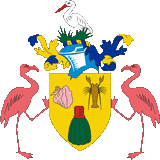 |
seit/since 1965, Wappen der Turks- und Caicos-Inseln – Coat of arms of the Turks and Caicos Islands, Quelle/Source, nach/by: Wikipedia (EN), Corel Draw 4 |
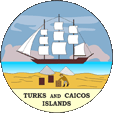 |
1875–1889, Emblem der Turks- und Caicos-Inseln – Badge of the Turks and Caicos Islands, Quelle/Source, nach/by: Flags of the World |
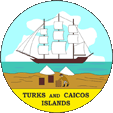 |
1889–1968, Emblem der Turks- und Caicos-Inseln – Badge of the Turks and Caicos Islands, Quelle/Source, nach/by: Flags of the World |
| Das Wappen der Turks- und Caicos-Inseln zeigt einen goldenen Schild, auf dem eine rosa Flügelschnecke, ein Hummer und ein Türkenmützenkaktus dargestellt sind. Oberhalb ein Helm mit blau-goldenen Decken, auf dem Helm Sisal-Pflanzen und ein Pelikan, links und rechts je ein Flamingo als Schildhalter. Das Wappen wurden den Inseln am 26.09.1965 verliehen. In den Jahren davor wurde das 1875 eingeführte Badge verwendet. Es zeigte eine Küstenszenerie, mit einem Strand im Vordergrund, auf dem ein Salinen-Arbeiter mit Rechen und Scheffeln vor zwei Salzhaufen arbeitet. Im Hintergrund ist ein Salz-Schiff zu sehen, das die kostbare Fracht Salz, den Exportschlager der Kolonie, aufnehmen wird. Im unteren Teil erscheint der Name der Kolonie. Das Badge scheint 1889 überarbeitet worden zu sein, das dargestellte Bild änderte sich jedoch kaum und wurde bis 1968 beibehalten, auch als die Inseln 1959 administrativ von Jamaika getrennt und eine eigenständige Kolonie wurden. |
The coat of arms of Turks
and Caicos Islands shows a golden escutcheon, on it a pink true conch, a
lobster and a Turk cactus. Above a silvery helmet with golden blankets, on
the helmet Sisal plants and a pelican, to the left and on the right per one
flamingo as supporters. The coat of arms was awarded to the islands on 26th of September in 1965. In the years before was used the in 1875 introduced badge. It showed a coastal scene with a beach in the foreground on which a Saltworks worker is engaged with a rake and bushels in front of two piles of salt. A salt ship can be seen in the background, taking on the precious cargo of salt, the colony's top export. The name of the colony appears in the lower part. The badge seems to have been revised in 1889, but the image depicted hardly changed and was retained until 1968, even when the islands were administratively separated from Jamaica in 1959 and became an independent colony. |
| Quelle/Source: Flags of the World, Wikipedia (EN), Volker Preuß | |
Landkarte – Map: |
Lage – Position: |
Landkarte des Landes – Map of the Country: |
|
|
| Zahlen und Fakten – Numbers and Facts: | |
|
|
|
|
|
|
|
|
|
|
|
|
|
|
|
|
|
|
|
12.10.1492
· wahrscheinlich vom spanischen Seefahrer Christoph Kolumbus entdeckt 1513 · wahrscheinlich vom spanischen Seefahrer Juan Ponce de León entdeckt, für Spanien in Besitz genommen, keine Kolonisierung 17. Jhd. · Besiedlung durch englische Salzsammler von den Bermuda-Inseln 18. Jhd. · mehrfach von Spanien und Frankreich besetzt 1783 · britische Besiedlung und Kolonisierung 1799 · Inbesitznahme durch Großbritannien, Anschluss an die Kolonie Bahamas 1848 · Trennung von den Bahamas, eigene Verwaltung 1873 · Anschluss an die Kolonie Jamaika 04.07.1959 · Trennung von Jamaika, Teil der Westindischen Föderation 31.05.1962 · Auflösung der Westindischen Föderation 06.08.1962 · die Turks- und Caicos-Inseln werden britische Kronkolonie 1974 · Kanada schlägt den Anschluss der Inselgruppe als elfte Provinz Kanadas vor seit 1979 · Forderungen nach Unabhängigkeit, dafür jedoch keine Mehrheit in der Bevölkerung 1986–1988 · direkte Herrschaft durch Großbritannien 2003 · Kanada schlägt erneut den Anschluss der Inselgruppe als elfte Provinz Kanadas vor 2009–2012 · direkte Herrschaft durch Großbritannien |
|
12th of October 1492 · probably discovered by the Spanish seafarer
Christoph Columbus 1513 · probably discovered by the Spanish seafarer Juan Ponce de León, appropriated for Spain, no colonization 17th century · settlement by English salt collectors from Bermuda Islands 18th century · severally occupied by Spain and France 1783 · British settlement and colonization 1799 · appropriation by United Kingdom, annexion to the Bahamas Colony 1848 · separation from the Bahamas, own administration 1873 · annexion to Jamaica Colony 4th of July 1959 · separation from Jamaica, part of the Federation of the West Indies 31st of May in 1962 · dissolution of the Federation of the West Indies 6th of August in 1962 · the Turks and Caicos Islands become a British crown colony 1974 · Canada proposes the annexion of the archipelago as eleventh province of Canada since 1979 · claims for independence, but there is no majority for that in the population 1986–1988 · direct rule by United Kingdom 2003 · Canada proposes once more the annexion of the archipelago as eleventh province of Canada 2009–2012 · direct rule by United Kingdom |
| Quelle/Source: Atlas zur Geschichte, Wikipedia (D), World Statesmen, Discovery '97, Volker Preuß |
| Zur Herkunft des Namens der Inseln gibt es zwei Theorien. Einerseits wird oft vermutet, dass der Name "Turks" von dem einheimischen Kaktus Melocactus intortus (englisch Turk’s Cap Cactus) stammt, dessen Cephalium oben auf dem Kaktus sitzt wie der Fez auf dem Kopf eines Türken. Er taucht auch im Wappen der Kolonie auf. Andererseits wird der Name Turks mit der früher hier allgegenwärtigen Piraterie in Verbindung gebracht, denn die Inseln dienten als Rückzugsorte für Piraten. Für Piraten wurde angeblich der Begriff "Türken" verwendet, was aus der Zeit stammt als das Osmanische Reich das Mittelmeer beherrschte und türkische Piraten die europäische Schifffahrt beeinträchtigten, so dass aus Pirateninseln "Turksinseln" geworden sind. Der Name "Caicos" bedeutet "Inselkette" und leitet sich vom Wort "Cava Hico" ab, das aus der Sprache der Lucayaner stammt, die Ureinwohner der Bahamas, die bis ca. 1520 auf den Inseln lebten. |
There are two theories
about the origin of the islands' name. On the one hand, it is often assumed
that the name "Turks" comes from the native cactus Melocactus intortus
(Turk's Cap Cactus), whose cephalium sits on top of the cactus like the fez
on a Turk's head. It also appears in the coat of arms of the country. On the
other hand, the name Turks is associated with the piracy that used to be
omnipresent here, as the islands served as retreats for pirates. The term
"Turks" was supposedly used for pirates, which dates back to the time when
the Ottoman Empire ruled the Mediterranean Sea and Turkish pirates
interfered with European shipping, so that Pirate Islands became "Turks
Islands". The name "Caicos" means "chain of islands" and is derived from the word "Cava Hico", which comes from the language of the Lucayans, the indigenous people of the Bahamas who lived on the islands until around 1520. |
| Quelle/Source: "From Igloos to Lobster Legs". Times of the Islands. Winter 2013/14. | |